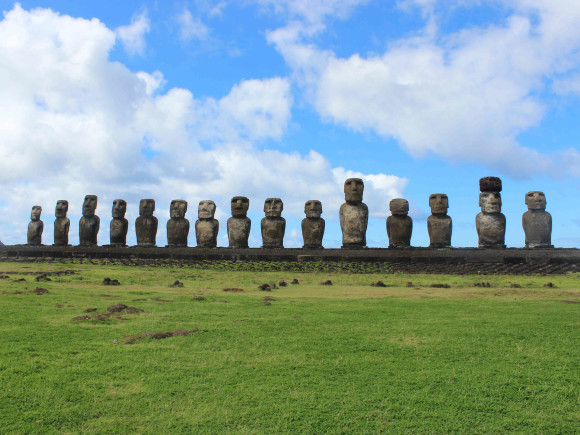Located in the southeastern Pacific Ocean, Easter Island is one of the most remote inhabited islands in the world. More than 2182 miles separate it from continental Chile and its residents live in a complex, fragile and unique ecosystem that is visited by thousands of tourists every year, making waste treatment very difficult.
In August last year, LAN CARGO signed a commitment with the Easter Island authorities to work jointly on the difficult task of transporting the bundles of cardboard that were stockpiled on the Island to the continent. The shipment was made free of charge, with the goal of helping preserve the ecosystem and history that have made of the Island an UNESCO world heritage site.
The journey started at Rapa Nui’s recycling facilities and continued at the Mataveri airport, where the bundles were shipped by LAN CARGO to Santiago and then collected by a recycling company.
Located more than 3,500 km away from the continent, Easter Island is one of the most remote inhabited places in the world. It has a total area of 160 km2 (63.2 square miles) and hosts a population of 5,761 people. Every year, more than 80,000 tourists visit this territory, often referred to as the “navel of the world.” �Forty-eight years ago, and after a 19-hour-long flight, the first LAN aircraft landed on this triangular strip of land.
Easter Island is not self-sufficient. It generates between 10 and 12 tons of waste every day, of which it only recycles 10%. As a consequence, the Island’s authorities, led by Mayor Pedro Edmunds, have sought to create awareness and to teach the population to separate their garbage by type, facilitating its handling and neutralization, with the goal of recycling 50% of the waste produced by 2017. �
The Orito recycling facility at Easter Island receives cardboard, PET plastic, tires and electronic waste, among other materials. The plant processes, compacts and stockpiles the waste according to a schedule set by the local health authority. Of all the waste generated in the Island, cardboard is the material that can most easily be transported to the continent, considering that it is difficult for the dengue egg to attach to its surface.
At Orito, cardboard is compacted in bundles that weigh between 300 and 500 kilos. The plant stores the bundles for at least six months to ensure that it is free of dengue eggs, thus preventing the plague from spreading to the continent.
Contributing to cleaning up Easter Island and taking care of its inhabitants and the environment — which is visited every year by more than 80,000 tourists — has become one of LAN CARGO’s priorities. An agreement signed in August last year between the company and the Island’s authorities stipulated that cardboard would be transported to the continent twice a week. The company is committed to putting an end to stockpiling at Orito by the end of the year.
Bundles are transported to the warehouse at the Mataveri airport, where LAN CARGO’s Operations Team prepares them for shipment on the cargo holds of passenger flights. Once in Santiago, they are collected by a recycling company responsible for their neutralization.
In December 2014, LAN CARGO fulfilled its commitment to end the stockpiling of cardboard at Easter Island, transporting more than 250 tons to the continent. Cardboard is now transported sporadically, to the extent that is needed. �For further progress, during 2015 LAN CARGO will transport PET plastic, which will also be recycled and reused. �
